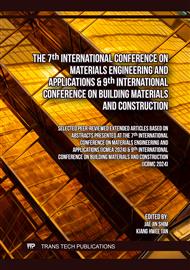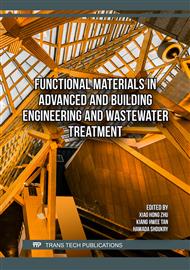p.31
p.39
p.45
p.53
p.63
p.73
p.81
p.87
p.99
Development of Hygrothermal Reference Year for Hygrothermal Simulation of Hygroscopic Building Construction for Guangzhou
Abstract:
For developing a hygrothermal reference year (HRY) to support the hygrothermal simulation of hygroscopic building construction in Guangzhou, a typical hot-humid city located in south China, the study first clarifies the correlation between the hygrothermal simulation results and the meteorological elements based on a 10-year baseline simulation with the hourly meteorological source data series obtained from the city weather station (CWS, from 2010 to 2019), then develops the HRY with consideration to typical construction conditions, and finally evaluates the representativeness of HRY. It shows that the simulation results of HVAC demand, indoor hygrothermal environment and exterior walls moisture content are significantly correlated with the air temperature Te, relative humidity RHe, and the normal rain RN. Based on this correlation, Te.mean, RHe.mean and RNsum are used as the indexes for selecting typical months from the source data series, which are then spliced to generate the HRY. A parallel simulation comparison among four model groups accordingly with HRY, CWS as well as two commonly used meteorological data, Meteo and epw, as outdoor climate conditions, shows that the curve similarity of monthly simulation results between the HRY model group and the CWS group has been significantly improved, and the annual simulation results of the HRY group are also in good agreement with the CWS group.
Info:
Periodical:
Pages:
63-71
Citation:
Online since:
July 2024
Authors:
Price:
Сopyright:
© 2024 Trans Tech Publications Ltd. All Rights Reserved
Share:
Citation:



